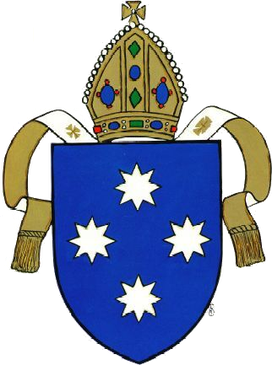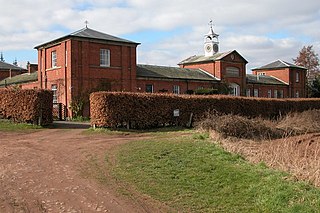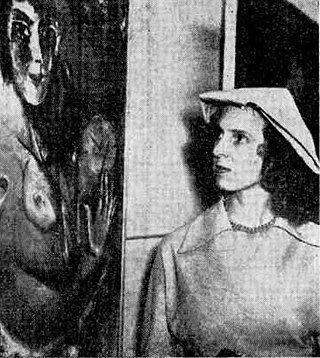Anglicanism is a Western Christian tradition which developed from the practices, liturgy, and identity of the Church of England following the English Reformation, in the context of the Protestant Reformation in Europe. It is one of the largest branches of Christianity, with around 110 million adherents worldwide as of 2001.

The Diocese of Sydney is a diocese in Sydney, within the Province of New South Wales of the Anglican Church of Australia. The majority of the diocese is evangelical and low church in tradition.
The Anglican Church in Aotearoa, New Zealand and Polynesia, formerly the Church of the Province of New Zealand, is a province of the Anglican Communion serving New Zealand, Fiji, Tonga, Samoa, and the Cook Islands. Since 1992 the church has consisted of three tikanga or cultural streams: Aotearoa, New Zealand, and Polynesia. The church's constitution says that, among other things, it is required to "maintain the right of every person to choose any particular cultural expression of the faith". As a result, the church's General Synod has agreed upon the development of the three-person primacy based on this three tikanga system. It has three primates (leaders), each representing a tikanga, who share authority.

The Society of Saint Francis (SSF) is an international Franciscan religious order within the Anglican Communion. It is the main recognised Anglican Franciscan order, but there are also other Franciscan orders in the Anglican Communion.

Anglican religious orders are communities of men or women in the Anglican Communion who live under a common rule of life. The members of religious orders take vows which often include the traditional monastic vows of poverty, chastity and obedience, or the ancient vow of stability, or sometimes a modern interpretation of some or all of these vows. Members may be laity or clergy, but most commonly include a mixture of both. They lead a common life of work and prayer, sometimes on a single site, sometimes spread over multiple locations. Though many Anglicans are members of religious orders recognized by the Anglican Communion, others may be members of ecumenical Protestant or Old Catholic religious orders while maintaining their Anglican identity and parochial membership in Anglican churches.
The Community of Christ the King (CCK) was an Anglican religious order of Benedictine nuns near Wangaratta, Victoria, Australia. Founded in 1993, this enclosed and contemplative order was under the jurisdiction of the Anglican Church of Australia. The convent operated guest and retreat facilities and the sisters provided a ministry of spiritual direction.
The Chita che Zita Rinoyera, CZR, is an Anglican religious order of women headquartered in Mutare, Zimbabwe in the Anglican Church of the Province of Central Africa. The community was established in 1935 by the English Community of the Resurrection. Members of the community work in health care and teaching, and also provide goods and services to parish churches throughout Zimbabwe. They also have an orphanage that cares for about seventy children. Since the 1980s, CZR has seeded three new communities in various places in Zimbabwe.

The Anglican Church of Melanesia (ACoM), also known as the Church of the Province of Melanesia and the Church of Melanesia (COM), is a church of the Anglican Communion and includes nine dioceses in the Solomon Islands, Vanuatu and New Caledonia. The Archbishop of Melanesia is Leonard Dawea. He succeeds the retired archbishop George Takeli.
Gerard Kennedy Tucker OBE (18 February 1885 – 24 May 1974, sometimes referred to as G. Kennedy Tucker, was an Anglican priest in Melbourne, Australia. Tucker founded the Brotherhood of St Laurence in 1930 and the forerunner of Oxfam Australia in 1953.

Henry Newton was an Anglican colonial bishop who served two Southern Hemisphere dioceses in the first half of the 20th century.
Lewis Bostock Radford was an Anglican bishop and author.
The Community of the Holy Name (CHN) is an international Anglican religious order for women. The full name of the community is The Community of the Mission Sisters of the Holy Name of Jesus, usually shortened to Community of the Holy Name. The order currently operates in Europe and Africa. There is also an order operating in Australia with the same name which has an independent history, having been founded entirely separately.
Former religious orders in the churches of the Anglican Communion are those communities of monks, nuns, friars, or sisters, having a common life and rule under vows, whose work has ended and whose community has been disbanded. In a very few cases this is due to the termination of the work for which the community was established, but in most cases it is due to amalgamation or the death of the final remaining member of the community.
St John's Theological College, Melbourne was an Australian educational institution in Melbourne, established in 1906 and closed in 1919. It trained candidates for ordination in the Church of England in Australia.
Emma Caroline Silcock (1858–1931) was an Australian Anglican religious sister and community worker, better known as Sister Esther. She founded the Community of the Holy Name in Cheltenham, Victoria and led The Mission to the Streets and Lanes of Melbourne, ministering to those living in the city's slums.
The Community of the Ascension was an Anglican religious community for men in Goulburn, New South Wales, Australia. It was the first male Anglican religious order to be successfully established in Australia, in 1921, and existed until it dissipated in 1940 and then formally dissolved in 1943.
Newton Theological College is a Papua New Guinean educational institution in Popondetta, Papua New Guinea. It trains candidates for ordination in the Anglican Church of Papua New Guinea.

Wendy Hope Solling was an Australian sculptor, Anglican Franciscan nun, and one of the earliest women ordained in the Anglican Church of Australia.
Maurice Richard Daustini Kelly was an Australian priest in the Church of England in Australia. He was the co-founder of two Anglican religious communities.






